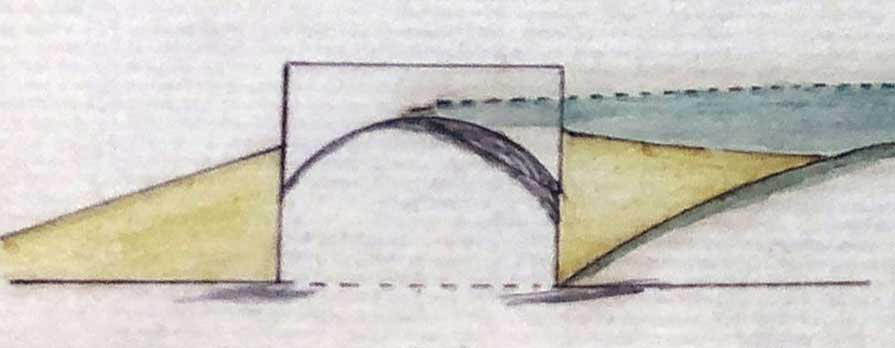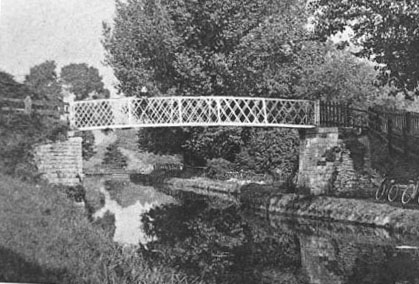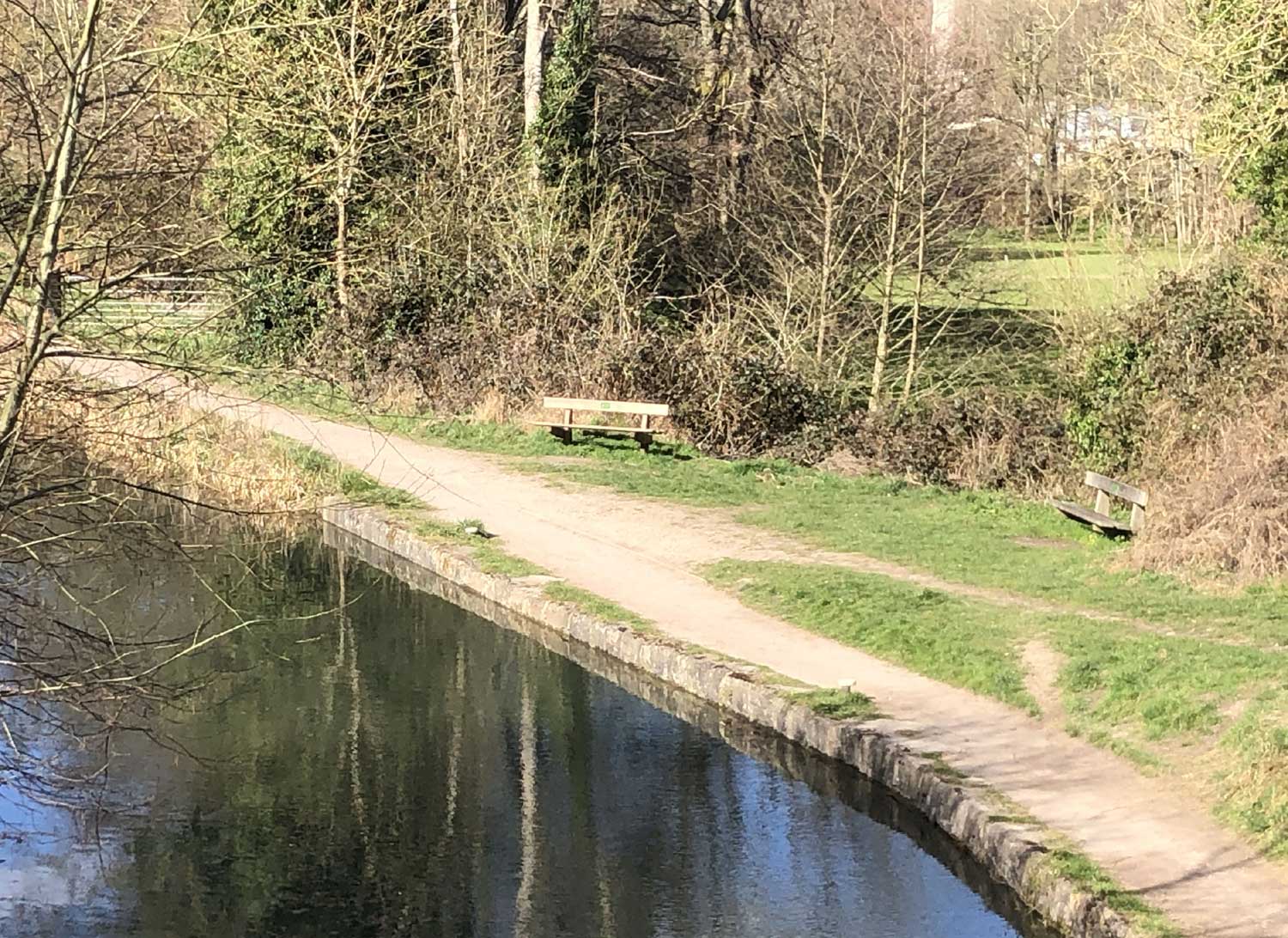The current Victorian structure followed two earlier bridges associated with nearby Griffin’s Mill. This section of canal was closed in 1933 and was restored between 2011 and 2018.


The original bridge associated with Griffin’s Mill was like all the other brick bridges along the canal, but this one collapsed into the canal in 1840. The contemporary sketch shows how the failure was blamed on sideways pressure from additional material (blue) being added by the mill owner to ease the gradient up the adjoining hillside (grey).
Two years later the T&S Company provided a temporary wooden footbridge to re-open the right of way. Then in 1846 the bridge hole itself was narrowed by sideways pressure from the recently built railway embankment. and the railway company had to make repairs.


By the 1890s there were many complaints that the footbridge was badly out of repair, but the canal company had no money to spare for such matters.
Eventually in 1903, after the County Council had taken ownership of the canal, they provided the current iron footbridge. They paid for it to be made at the Stoudwater Company’s maintenance yard at Eastington, and it was delivered to site by canal.
How it became known as Jubilee Bridge is not clear.


This former wharf (viewed from Jubilee Bridge) was much used by boats delivering coal to Griffin’s Mill. The mill originally produced woollen cloth, but by 1838, it had become a sawmill and later manufactured walking sticks.
By 1900, a crane on the wharf was used for discharging sticks, and wagons on a horse-drawn tramroad carried them into the works.
100 yards south of the wharf is a milestone with a modern plate marking 1.5 miles from Walbridge (spelt with one L).
Griffin’s Bridge collapse from TS/193/20.
Griffin’s Bridge wooden footbridge from TS/165a 21 Jul 1842.
Griffin’s Bridge iron footbridge from C/CTS/2/1 p95, 96.
Griffin’s Mill history from https://www.british-history.ac.uk/vch/glos/vol11/pp119-132.
Griffin’s Wharf crane & tramroad from Stroud News 29 Aug 1902 and c1900 OS map